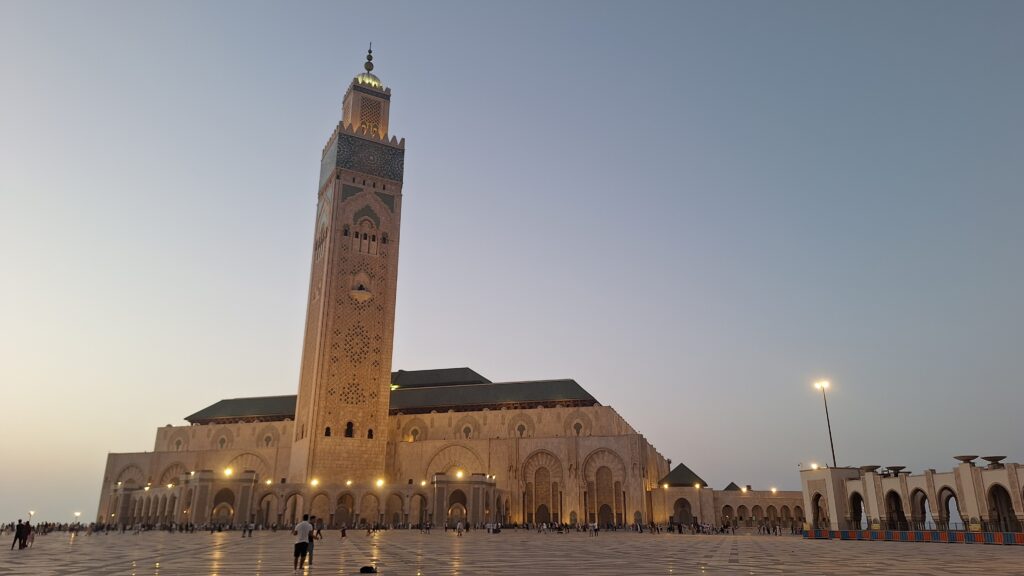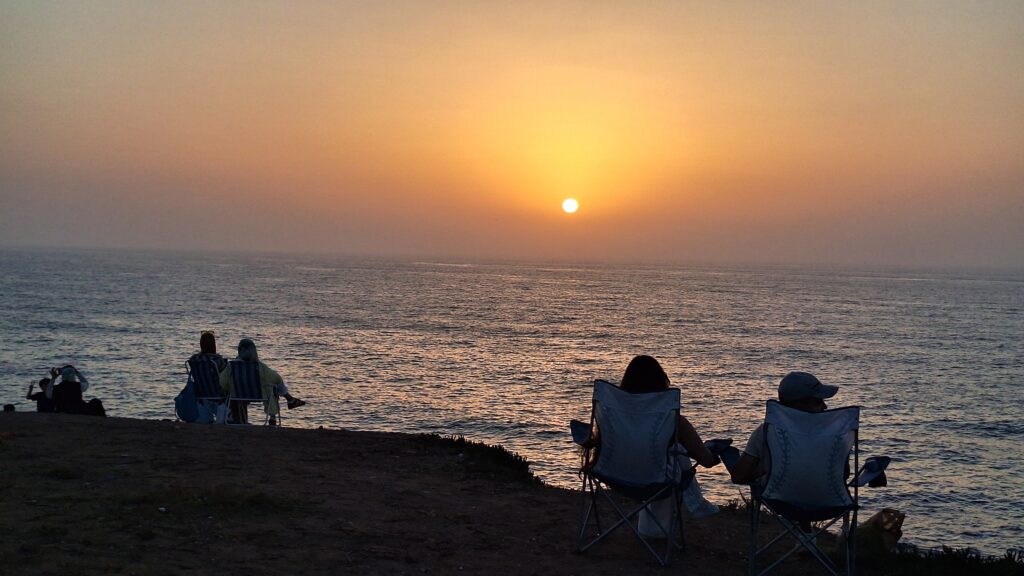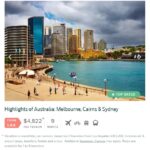Casablanca is known as the business capital of Morocco, but by night, the city transforms into something entirely different. The streets glow under golden lamps, the Atlantic breeze and sunsets delight locals and tourists alike. And the rhythm of Morocco’s largest city slows into a more intimate pace by twilight.
The moment I landed in Casablanca, I was looking forward to exploring the city. I booked the walking night tour of Casablanca and I discovered a side of the city that most travelers miss—one filled with hidden corners, lively cafés, belly dancers, and architectural gems that shine brightest after sunset.
- Starting Point: The Arab League Park
- Sacré-Cœur Cathedral
- The Glow of Hassan II Mosque
- Strolling the Corniche
- Dinner and a Belly Dance Show
- Practical Tips for a Casablanca Night Walk
- In Summary…
- Plan My Adventure
Starting Point: The Arab League Park
The first stop of the tour was the Arab League Park, which is Casablanca’s largest and most iconic green space, often described as the city’s “green lung.” It spans about 30 hectares and offers locals and visitors a peaceful escape from the bustle of Morocco’s economic capital.
Arab League Park is more than just a recreational space—it’s a symbol of Casablanca’s evolution from colonial urban planning to a modern metropolis. For residents, it’s a family friendly cherished oasis; for tourists, it’s a must-see stop that blends history, architecture, and leisure.
I particularly booked my hotel overlooking the park, not only for the views, but also for the long rows of palm trees that line the park, offering shade and a picturesque walking route. The locals enjoy picnics, jogging, skating, tennis, or simply relaxing in its tranquil atmosphere, which comes alive during the evening when the sun is no longer scorching.
Sacré-Cœur Cathedral
The Sacré-Cœur Cathedral in Casablanca, also known as the Church of the Sacred Heart, is a striking Art Deco landmark built in 1930. Though no longer used for religious services, it remains one of the city’s most iconic cultural spaces.
- Designed by French architect Paul Tournon, the cathedral reflects a blend of Art Deco and Neo-Gothic influences.
- It was constructed during the French Protectorate and originally served as a Catholic church for Casablanca’s European community.
- Despite being commonly referred to as a cathedral, it was never officially the seat of a bishop.
🌿 Transformation After Independence
- Religious functions ceased in 1956, following Morocco’s independence.
- The building was repurposed into a cultural and exhibition center, hosting art shows, concerts, and even electronic music events
- Its vast nave and monumental façade make it a popular venue for creative performances and public gatherings.
The Glow of Hassan II Mosque
Continuing on the walking tour, we made it to the Hassan II Mosque, one of the largest mosques in the world. At night, it’s breathtaking. The minaret—the tallest in Africa—gets illuminated at night, its reflection shimmering on the Atlantic waves.
Even if you’ve visited during the day, seeing the mosque at night is unforgettable. The plaza surrounding it becomes a gathering place for families, couples, and travelers, all soaking in the serenity of the scene.

Strolling the Corniche
Next, we continued to the Corniche, Casablanca’s seaside promenade. At night, the Corniche comes alive with locals enjoying the cool breeze, street performers entertaining small crowds, and cafés buzzing with energy. The Corniche is where Casablanca’s modern energy meets its timeless connection to the sea.

Dinner and a Belly Dance Show
Belly dancers in Casablanca are artists who blends Moroccan folk styles with classical Middle Eastern dance, creating a unique cultural experience for locals and visitors alike.
Tourists frequently encounter belly dancers during organized dinners or cultural evenings in Casablanca. On my walking tour, the small group traveled for dinner where our last stop was a farewell dinner. The dinner at the restaurant featured a gorgeous belly dancer performing alongside a traditional Moroccan music group.
Belly dancers in Casablanca embody the city’s spirit: a crossroads of tradition and modernity, local culture and international flair. Their performances are more than entertainment—they are living expressions of Morocco’s rich artistic heritage.

Practical Tips for a Casablanca Night Walk
- Best Time to Start: Around sunset, so you can see the city transition from day to night.
- What to Wear: Comfortable walking shoes.
- Safety: Casablanca is lively at night, but as with any city, stay aware of your surroundings. I traveled solo and felt very safe walking around the city and the park by myself.
- Guided Tours: I highly recommend booking a tour to explore the city, especially at night. Consider joining a Casablanca night walking tour with a local guide for insider stories and hidden gems.
In Summary…
A walking night tour of Casablanca is more than sightseeing—it’s about experiencing the city’s rhythm after dark. From the glowing Hassan II Mosque to the lively Corniche and the chic neighborhoods, and Araba League Park, Casablanca at night reveals a blend of tradition, modernity, and magic.
For me, it was a reminder that some cities are best understood not in the daylight, but under the glow of their evening lights.
Learn more about Morocco:
- Top Things to Do in Tangier: Explore Morocco’s Gateway Between Continents
- Morocco’s Blue Magic: A Walking Tour of Chefchaouen’s Hidden Corners
Plan My Adventure
Ready to start planning your Moroccan adventure? Morocco is worth visiting because it offers a rare blend of history, culture, landscapes, and hospitality—all within easy reach from Europe and beyond. it’s a destination that appeals to adventurers, food lovers, and culture seekers alike. Contact us today to plan your adventure:


